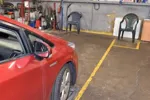Nearly all large MPVs, SUVs and executive models are now diesel (see table), while penetration of small diesels has languished.
In the supermini segment, the cost of meeting Euro IV regulations is such a high proportion of the vehicle price, and the fuel savings so comparatively small, that the costs have generally outweighed the benefits.
Hence it is something of a surprise to find that sales of diesel superminis grew by 15% last year – one of the highest growth rates in the market (see table).
Most of the growth has come from two new models: the Vauxhall Corsa and the Mini. The Mini is particularly interesting as it has come from nowhere to become the fourth best selling diesel in the segment in the final quarter of 2007 (behind the 207, Corsa and Fiesta), thanks to its good performance and astonishing CO2 figure of just 104g/km.
So does the Mini diesel herald a new age of small diesels that are so economical that customers will pay the extra cost? Probably not.
Buyers at the top end of the segment may be prepared to pay extra for the Mini diesel (and the bragging rights that go with Prius-equalling carbon emissions), but there is another barrier to small diesels looming.
The Euro V regulations, due for full implementation by 2011, will add so much cost that even a Mini buyer will think twice. A particulate filter will become mandatory (as part of package that will cut particulates by a factor of five) and diesels will also have to cut oxides of nitrogen by almost 30%.
The cost of upgrading small diesels is going to be high – certainly hundreds of pounds will be added to the cost of a small diesel in the showroom.
Meanwhile, manufacturers are working on small turbocharged petrol engines that can give most of the economy advantages of diesels with a retail price saving of somewhere around £750 compared to a Euro V diesel. Hence the current boom in small diesels is not likely to last more than another year or two.
Not that buyers in 2008 should be put off by what is going to happen in three years time.
Quite the contrary: the last of the Euro IV diesels should be quite popular on the used car market from 2011, as their direct replacements will suddenly become a whole lot more expensive.
Percentage diesel growth rate 2006-2007

The graph clearly reflects the success of the supermini segment along with the majority of the bigger car groups.

The Mini has helped boost supermini diesel sales.














Login to comment
Comments
No comments have been made yet.